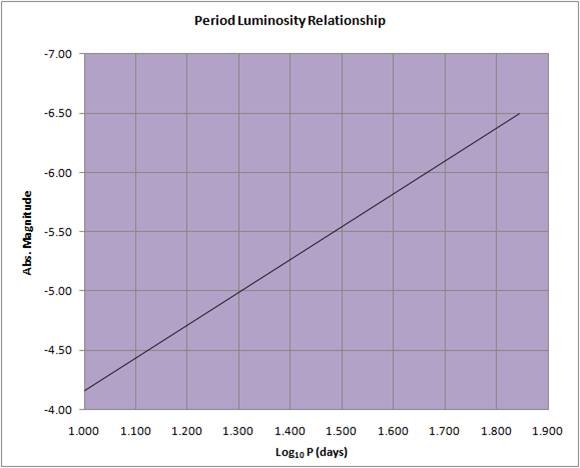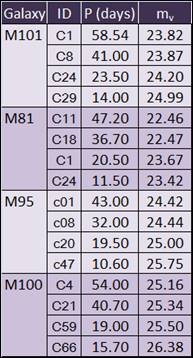Distant Nature: Astronomy Exercises
Objectives
This exercise will follow Edwin Hubble’s work in using the
Period/Luminosity (P/L) relationship of Cepheid variable stars to calculate the
distance to, what were termed in his day, “Spiral Nebulae”.
Today we know these objects as galaxies.
Equipment/Materials Needed
Stellarium, Calculator.
Subject Introduction
In 1924, Edwin Hubble discovered a
Cepheid variable star in what was then called the great Andromeda
"nebula". He calculated the distance using the Period-Luminosity
relationship discovered by Henrietta Leavitt and found the resulting distance
much farther than previously estimated. This data along with his discoveries of
Cepheid variables in other spiral "nebula", fundamentally changed our
view of the universe. Using Leavitt's relationship between the period (P) of
the stars change in apparent magnitude with the star’s
luminosity (often, the absolute magnitude is used) He showed the distance to
the Andromeda Galaxy to be over 2.5 Mly away. This P/L relationship proved to
be an important key to measuring distance. The P/L allowed astronomers to use
the Cepheid variable as a “standard candle”.
When used in conjunction with the “Inverse Square
Law” of light the P/L, in effect, becomes a measuring stick.
Cepheid variables have a narrow range of period and luminosity. This allows for
their identification even at great distance. Once identified, the period can be
used in the P/L to determine the luminosity or the absolute magnitude.
The P/L is shown in Figure 1, plotting the absolute magnitude, Mv
versus the log10 of the period, P.

Figure 1.
You can use the distance modulus equation to determine distance, once you have the apparent and absolute magnitudes (mv and Mv).
Table 1. lists the Period (P) and apparent magnitude mv for
four Cepheid variables in each of four galaxies.

Table 1.